Yellow Garden Ideas: Brighten Your Outdoor Space with Vibrant Hues
Creating a yellow garden can bring a burst of sunshine to your outdoor space. Whether you’re adding a few strategic pops of color or going all out with a full yellow theme, there are many ways to incorporate this cheerful hue into your garden. Yellow flowers can brighten even the shadiest corners and enhance the overall feel of your outdoor areas.
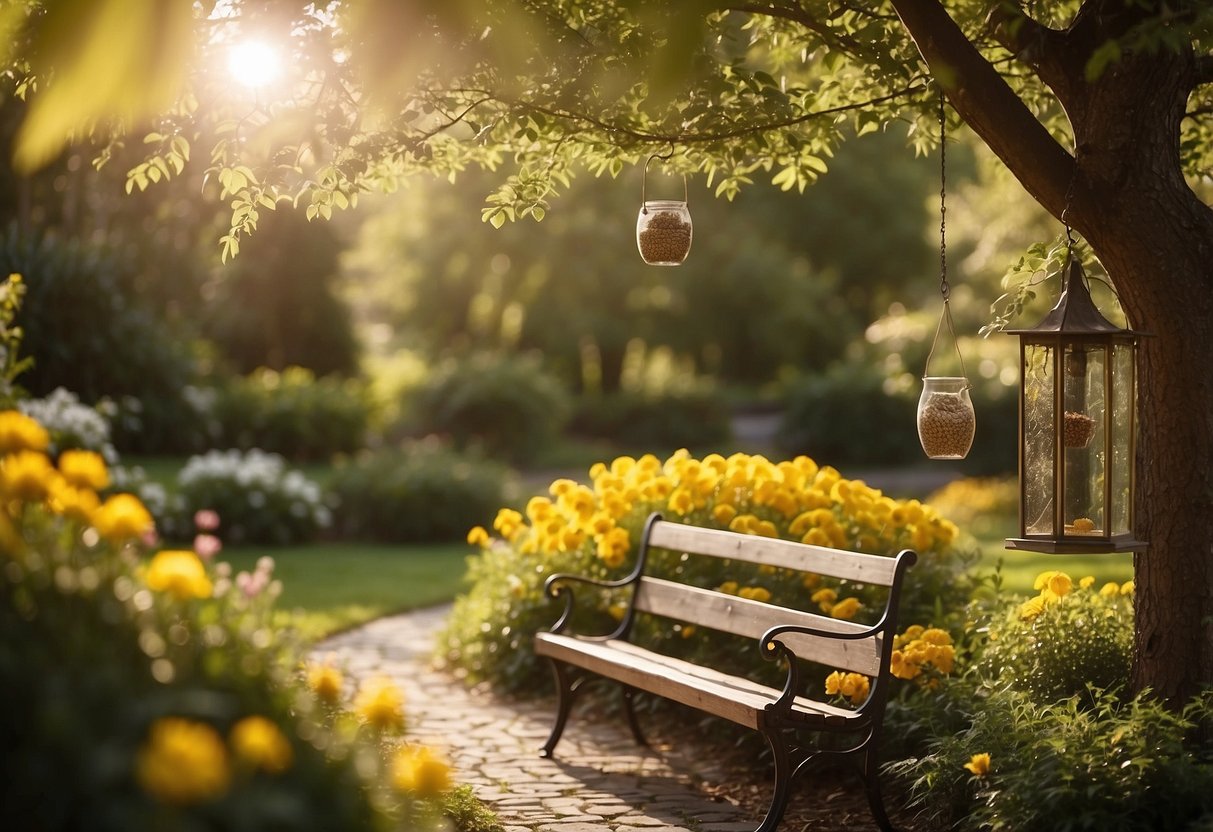
You’ll find a variety of yellow plants that thrive in different conditions, from full sun to partial shade. By mixing different types of yellow flowers, you can create a vibrant and inviting space that lasts throughout the growing season. Whether you prefer perennials that return year after year or annuals that provide a quick splash of color, there’s something for every gardener.
1) Lemon Marigolds
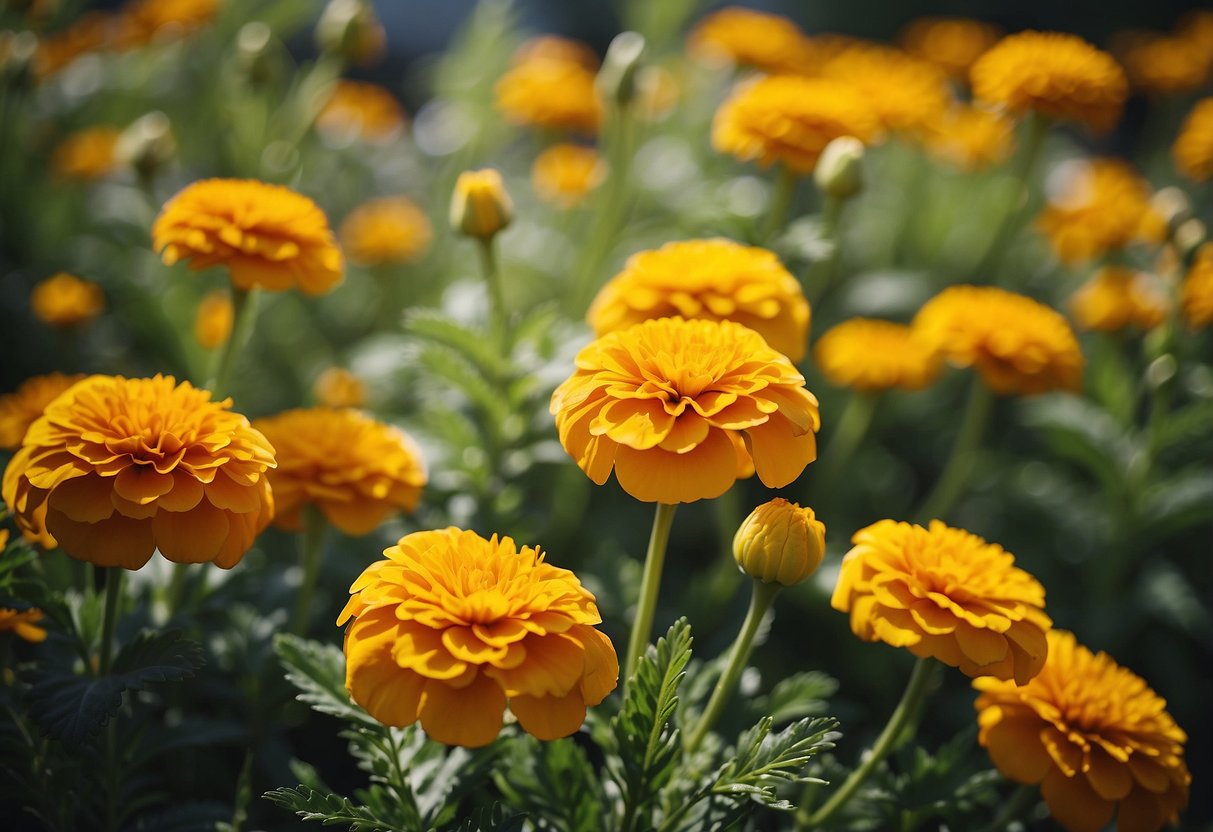
Lemon Marigolds add bright yellow color to your garden. They have finely textured foliage and are known for their delightful citrusy fragrance.
You can plant Lemon Marigolds in borders, rock gardens, or containers. They grow well in USDA zones 9 to 13, making them a versatile choice for many gardeners.
Try Lemon Marigolds to add a cheerful touch to your outdoor space! To learn more about this vibrant flower, check out this guide.
2) Golden Sunflowers

Golden sunflowers are a beautiful choice for your garden. They bring a bright and cheerful touch to any space.
You can plant sunflowers in rows to create a lovely maze. Make lines with flour on the ground and plant seeds along these lines. They will grow into tall, golden walls.
Consider planting dwarf sunflowers as well. These smaller varieties add charm and character to your flower beds. They grow to about 12-18 inches tall and mix well with other plants.
3) Buttercup Daisies
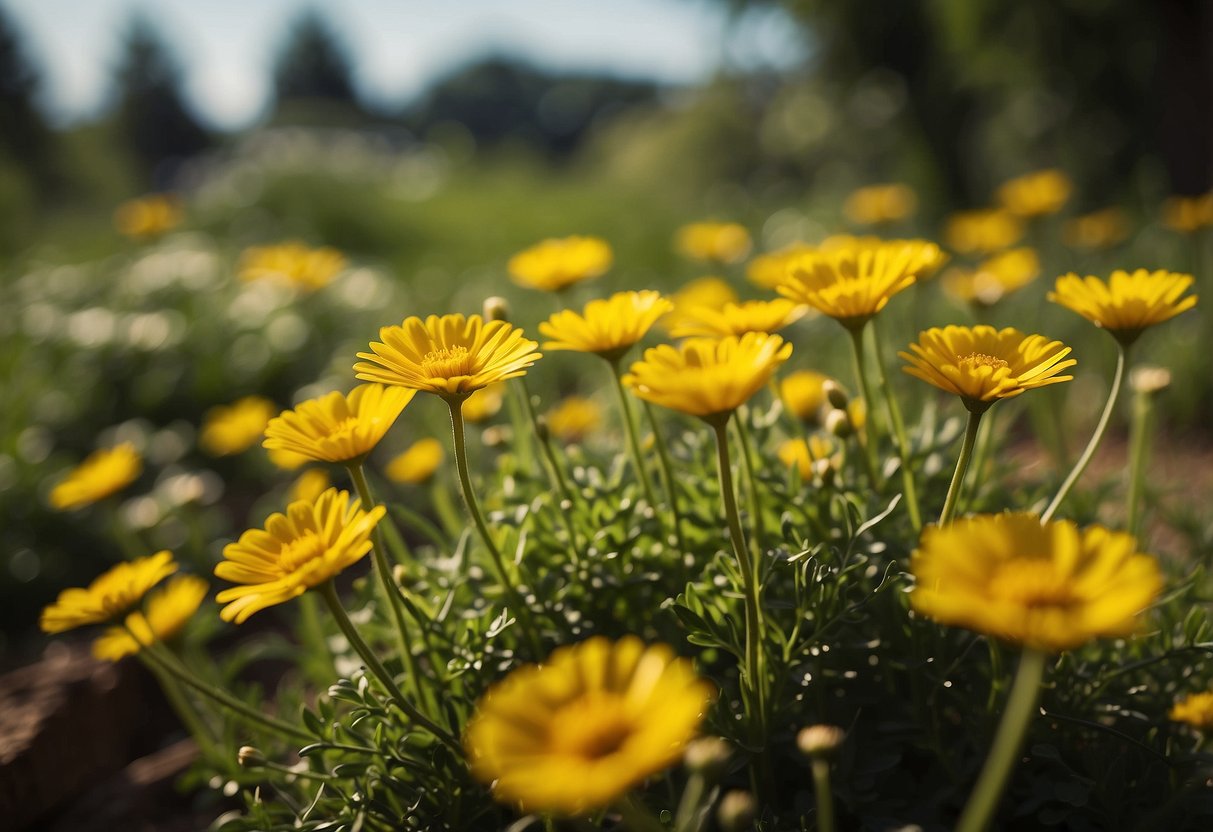
Buttercup daisies can brighten up any garden with their cheery yellow color. They are known for their vibrant yellow petals and dark green leaves. These flowers are perfect for borders or flower beds.
Buttercup daisies thrive in well-drained soil and need plenty of sunlight. Make sure to water them regularly to keep the soil moist. They can grow up to 2 feet tall, adding height and color to your garden. If you want a garden filled with beautiful yellow blooms, buttercup daisies are a great choice.
4) Yellow Tulips

Yellow tulips can add a bright pop of color to your garden. There are many types to choose from, like the Secret Perfume tulip. This variety reaches 14-16 inches tall with pale yellow petals.
Another unique option is the Golden Charm tulip, which grows only 3-4 inches high. Its star-shaped petals have a creamy white edge.
For a taller option, the Texas Flame tulip stands at 18 inches. It features ruffled, buttercup-yellow petals with vivid red stripes.
5) Goldenrod

Goldenrod is a fantastic choice for adding a splash of yellow to your garden. It thrives in various conditions, from full sun to partial shade, making it quite versatile.
One variety you might like is Solidago sphacelata, also known as woodland goldenrod. It prefers shaded areas and sports clusters of bright yellow flowers.
Shorter goldenrod varieties, like ‘Golden Fleece’, are perfect for the front of garden borders. These plants grow about 3 feet tall and have colorful sprays that brighten up any space.
6) Yellow Roses

Yellow roses bring cheer to any garden with their bright blooms. Varieties like ‘Graham Thomas’ shine with their rich, honey-yellow flowers. This type can grow up to 12 feet tall and looks stunning when trained on a trellis in full sun.
‘Gold Medal’ is another beautiful option. Its blossoms start as copper-orange buds, turning golden yellow before fading to cream. This grandiflora rose grows five to six feet tall, providing an ever-changing display.
For the best results, ensure your yellow roses get at least six hours of sunlight daily. Remember to water deeply and use balanced fertilizer to keep them healthy and vibrant.
7) Sunshine Primroses
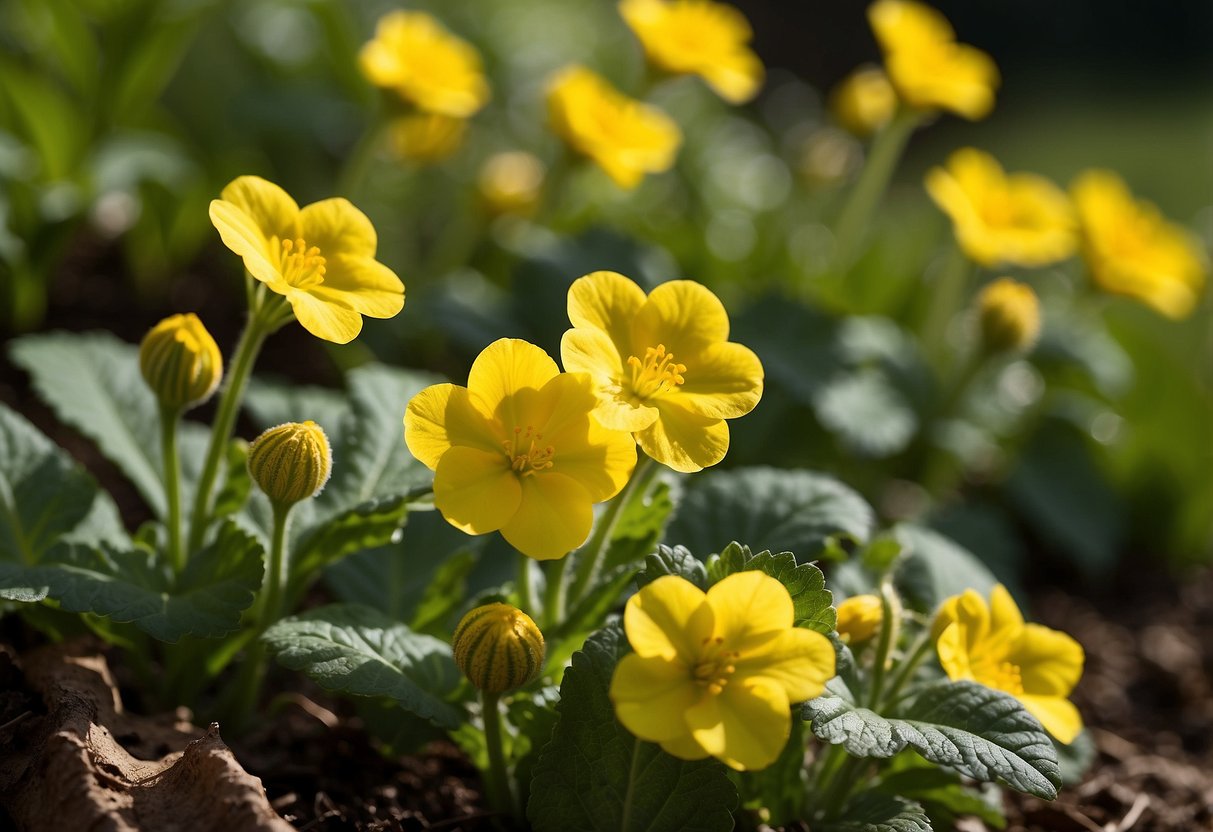
Sunshine primroses can light up your garden with their bright yellow blooms. They are perfect for adding a sunny touch to any flower bed.
These plants are easy to grow and enjoy a spot with partial shade. Make sure to keep the soil moist and well-drained for happy plants.
Look out for varieties like the English Primrose, which produces lovely yellow flowers in late winter to early spring. These plants can bring cheer to your garden when other flowers are still dormant.
For more information on growing these pretty flowers, check out this Gardening Guide on Primroses.
8) Yellow Hibiscus

Yellow hibiscus is a stunning choice for your garden. These shrubs can grow up to 10 feet tall. They have dark green, glossy leaves and vibrant yellow flowers.
Plant them in slightly acidic to neutral soil that is rich in organic matter. Adding compost can be helpful.
Ensure your yellow hibiscus gets plenty of sunlight. This helps prevent yellow leaves. If the leaves do turn yellow, it might be due to nutrient deficiencies. Mulch can help retain moisture and maintain soil quality.
For more details on growing yellow hibiscus, you can check out this guide.
9) Canary Creeper Vines

Canary Creeper Vines are a wonderful choice for adding a bright yellow touch to your garden. These vines grow quickly and can reach heights of 8-10 feet, making them perfect for trellises or fences.
They thrive in well-draining soil and don’t require a lot of nutrients. Plant the seeds about 36-48 inches apart and keep the soil moist until they germinate.
Once established, Canary Creeper Vines need less water and can handle dryer conditions. Their small, yellow flowers will bring a cheerful vibe to your garden space. Learn more about growing these vines at Growing In The Garden.
10) Yellow Daylilies

Yellow daylilies can brighten up any garden with their vibrant colors. These flowers are not only beautiful but also easy to care for. They thrive in many hardiness zones, from zone 3 to 10.
One popular variety is the Cadmium Yellow Daylily, known for its lemon-yellow hue. It grows 2 to 4 feet tall and stands out perfectly against greenery.
Another favorite is the Rainbow Rhythm ‘Going Bananas’, a reblooming yellow daylily with lightly fragrant flowers that bloom through summer into fall.
Benefits of Yellow Gardens
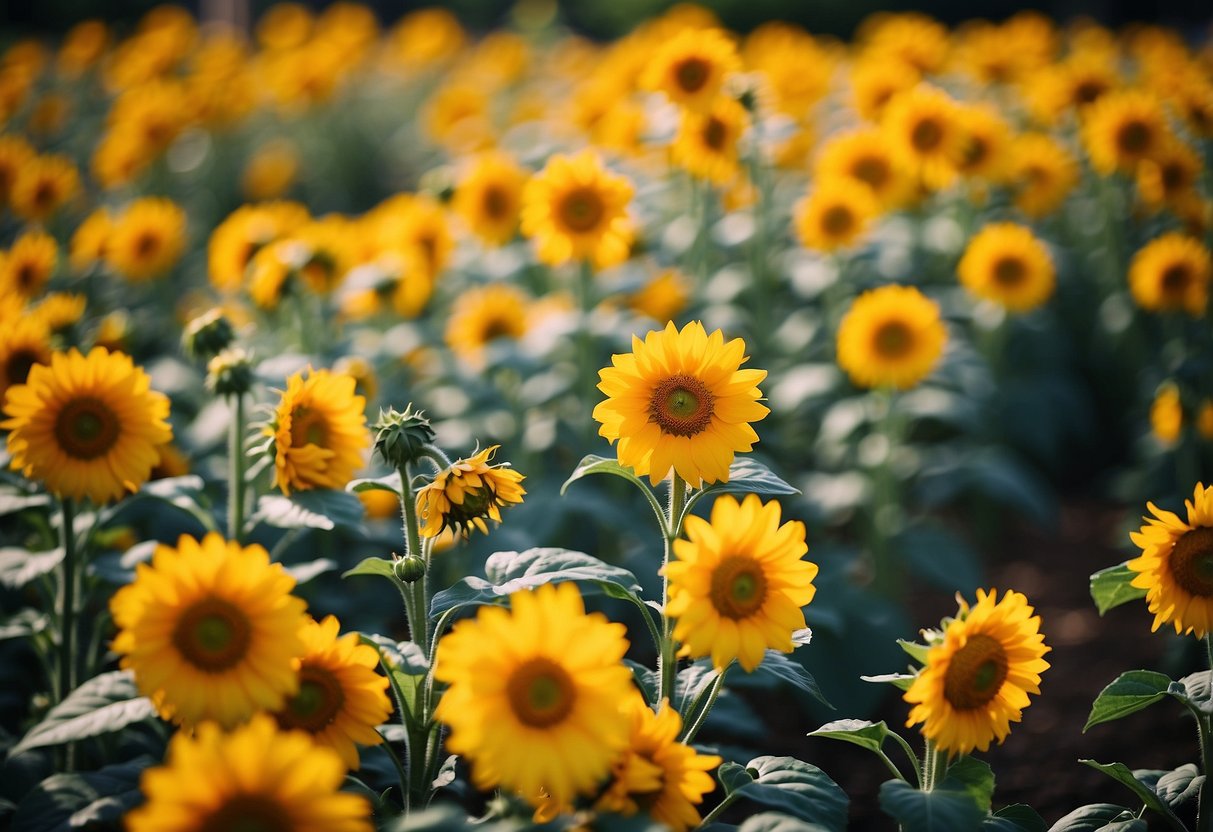
Yellow gardens can bring vibrant color and energy to your outdoor space. They are also great for attracting pollinators and enhancing the visual interest of your garden.
Attracting Pollinators
Yellow flowers are very effective in attracting pollinators like bees and butterflies. Many pollinators are drawn to bright colors, and yellow is one of the most noticeable. Flowers like Yellow Alyssum and Yellow Crocus are particularly popular choices.
Bees, in particular, have a strong attraction to yellow hues. By planting yellow flowers, you can help support the health of local bee populations, which are crucial for pollination and the growth of many plants.
Butterflies also love yellow flowers. Species like the Yellow Cosmos can create a welcoming environment for these beautiful insects. Having butterflies around adds beauty and dynamics to your garden.
Creating Visual Interest
Yellow flowers add a lively and cheerful touch to your garden. They can create stunning visual contrasts when paired with other colors. For example, yellow flowers can pop against a backdrop of green foliage or mix well with purple and blue flowers.
By incorporating a variety of yellow flowers, you can have blooms that appear from early spring to late fall. For instance, Winter Aconite blooms early in the season, while Supertunia® Limoncello® Petunias can last until frost.
This variety ensures that there will always be something bright and eye-catching in your garden. A mix of different heights and textures, like the cascading form of petunias or the upright stance of sunflowers, adds depth and richness to your outdoor space.
Design Tips for Yellow Gardens
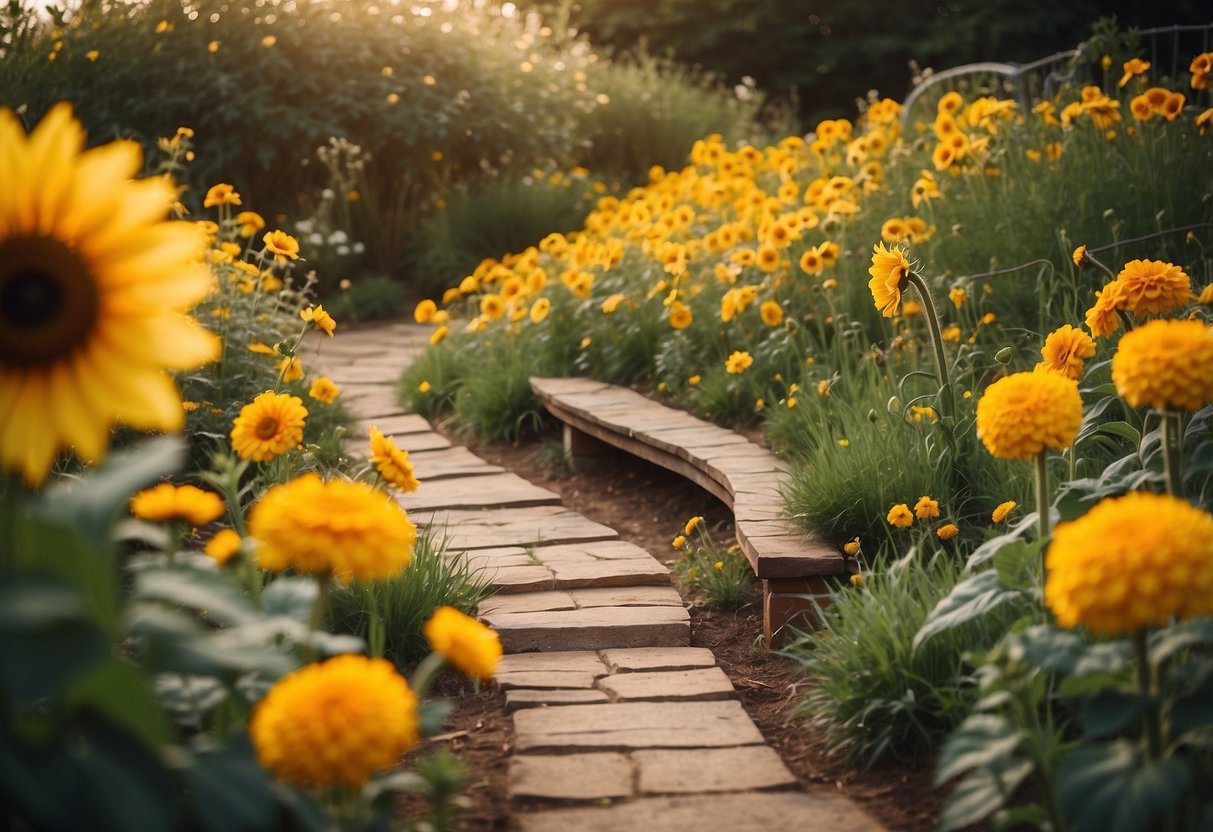
Creating a yellow garden brings a bright and cheerful vibe to your outdoor space. Here, you’ll find tips on choosing the perfect shades of yellow and combining them with other colors for a stunning effect.
Choosing the Right Shades of Yellow
When picking shades of yellow, consider the different hues and their impact. Bright yellows like sunflower and marigold can bring energy to your garden, while softer shades like primrose offer a calming feel.
It’s important to mix various shades to prevent the garden from looking monotonous. Lighter yellows work well in shaded areas, as they appear more vibrant in low light.
On the other hand, stronger yellows are great for sunny spots where they can stand out. To keep your garden blooming throughout the season, visit nurseries regularly and choose plants that flower at different times.
Combining Yellow with Other Colors
Yellow pairs beautifully with many other colors, creating a balanced and appealing garden. For a classic look, mix yellow with green foliage. The green serves as a neutral background that makes yellow flowers pop.
Pastel colors, such as pinks and purples, add a soft touch when combined with yellow. This combination works particularly well in spring gardens.
For a bolder statement, consider pairing yellow with contrasting colors like deep reds or purples. This can make your garden look vibrant and lively.
Use design ideas to plan sections where these color contrasts can be most effective. Remember to include some consistent elements, like pathways or hedges, to tie everything together.
Seasonal Considerations
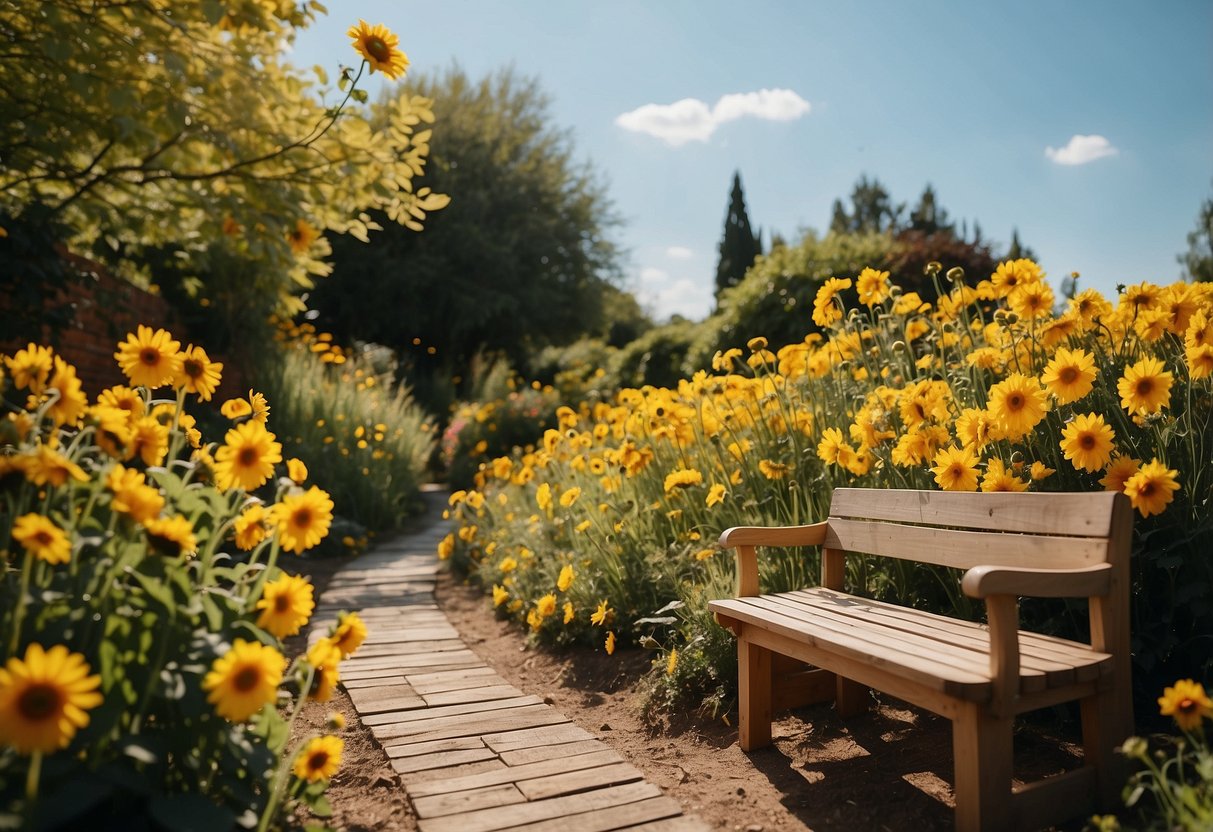
A yellow garden can bring joy all year round if you choose the right plants for each season. Let’s look at how you can keep your garden vibrant in spring, summer, fall, and winter.
Spring and Summer Blooms
During spring and summer, you can enjoy a variety of yellow blooms. For spring, consider planting yellow alyssum, also known as basket of gold. This ground cover blooms in spring and looks beautiful over rocks. It thrives in USDA Growing Zones 3-7.
As summer progresses, add some Supertunia® Limoncello® Petunias. These buttery yellow flowers bloom all summer long and into the fall. They are perfect for hanging baskets, window boxes, or along a slope. These petunias do well in zones 10-11.
Including creeping zinnia can give your garden a cheerful look. This annual plant produces small yellow flowers and spreads up to 12 inches. It requires full sun and grows best in zones 9-11. Creeping zinnias are compact, making them ideal for borders or small spaces.
Fall and Winter Interest
Fall and winter don’t mean the end of color in your garden. Some plants maintain their color and structure even when temperatures drop. Marigolds can continue to bloom well into fall. They are hardy and can survive the first light frosts.
For winter interest, consider planting yellow deciduous shrubs like Hamamelis (witch hazel). Witch hazel produces yellow flowers in late winter, giving your garden a unique charm and fragrance. It’s hardy in zones 3-9.
Another option for winter is Japanese Kerria. This shrub has bright yellow flowers that appear in late winter or early spring. It grows well in zones 4-9 and can tolerate partial shade. The vibrant flowers provide a pop of color when most other plants are dormant.
By planning carefully, you can ensure your yellow garden looks great year-round.







